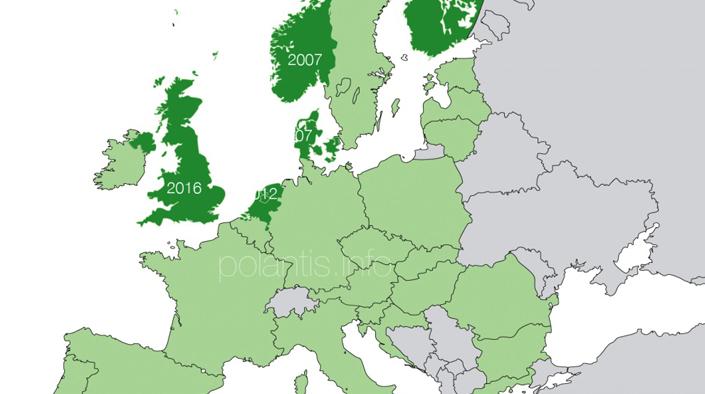European BIM or Europe of BIM?

The digital transition of the construction sector is spreading. The BIM World event, which took place on March 25&26 in Paris, invited BIM experts from UK, Netherlands, Germany, Finland and Norway to share their experience.
United Kingdom: making public an example with clear objectives
Mark Bew, Chairman of HM Government BIM Task Group presented British progresses on BIM. Launched in 2011, this working group gathers government, public construction sector, industry and academia. Their objective is clear: to strengthen the public sector’s capability in BIM implementation with the aim that all central government departments will be adopting, as a minimum, collaborative Level 2 BIM by 2016.
The British plan sees on the long term, "We never said it would be a quick project," quips Mark Bew. The British government sees BIM as a great opportunity for the sector and established clear and ambitious objectives:
- -33% construction costs
- -50% of CO2 emissions,
- -50% of delivery times
- +50% construction exports
- 1.2 billion £ saved
"Let's not get lost in the awesome technolgical aspect of BIM, we should focus on the benefits those tools are meant for," says Mark Bew, warning against too muuch technology."The Level 3 of our plan will integrate the management of buildings over its whole life cycle, but also measurements, through the internet of things. Ultimately, BIM will generate new economic models," Mark Bew announces, "That's why we don't want to be prescriptive on the systems to adopt. We want to send a clear and consistent message. Of course, if we don't walk professionals through properly, nothing will happen".
Field experiments, feedbacks and standards
The Dutch approach is more field and process oriented. In Netherlands, the interest for BIM started in the early 2000ies, but the real leap forward was made in 2012, with the launch of Rijkswaterstaat BIM Programme. The programme, led by a Building Information Council, brings together all the actors of the construction sector. It aims to implement BIM in large infrastructure projects (roads and waterways). It will be completed by May 2015 with a concept library destined to connect technical jargons: architects, engineers, builders, industrials and contractors. The Rijkswaterstaat BIM Program, through from pilot projects, also develops a stnadard process for information exchange, called COINS.
Unify national strategies at a European level
The European Commission understands the interest of BIM for its energy and environmental transition policy. The EU policy is close to the British approach as it aims to ensure the dissemination and adoption of BIM by leading examples. Through the EU Directive on public procurements released in February 2014, the Commission recommends the use of BIM: " For public works contracts and design contests, Member States may require the use of specific electronic tools, such as of building information electronic modelling tools or similar."(Article 22) In practice, this means that each Member State may choose to encourage, specify or make mandatory use of BIM for construction projects and buildings financed by public funds.
By encouraging the development of BIM within Member States and through its BIM working group composed of representatives from many countries, the Commission wants to achieve several objectives close to the Dutch initiative:
- collect and disseminate good practices in each country;
- unify methods and processes to connect the systems;
- allow the European construction sector to be competitive again while optimizing production.
"To achieve this, it is important to be clear in our messages and regulations. In front of so many practices and the variety of EU regulations, we need to avoid confusion in our message to the construction sector which is critical for our energy and environmental transition policy," Adam Matthews concludes, representative of the EU BIM Working Group of the Commission.
What will result from these initiatives and experiments? Will we see national BIMs flourish across Europe, like so many ivory towers unable to communciate with one another? Or will the collaborative aspect of BIM expand to leaders and national plans like the UK BIM Task Group or the French Plan for the Digital Transition of Buildings? The speakers at BIM World shared how they got inspired by foreign experiments, and Bertrand Delcambre, Head of the French Plan, is looking forward future connections with the newly born German PLan for Digital Transitions and other initiatives among Member States.
BIM in Europe - source http://www.polantis.info/



